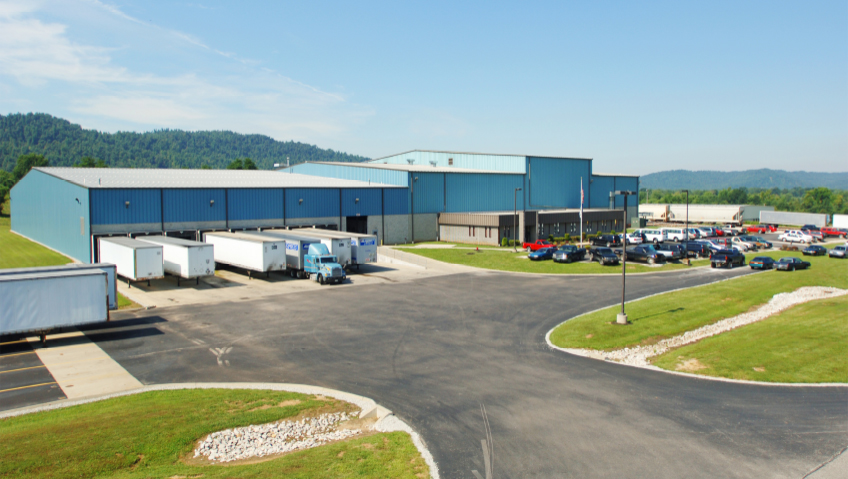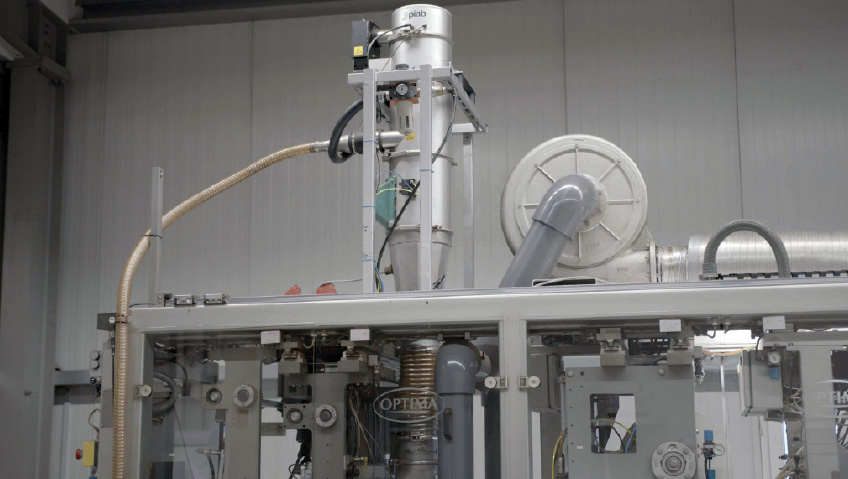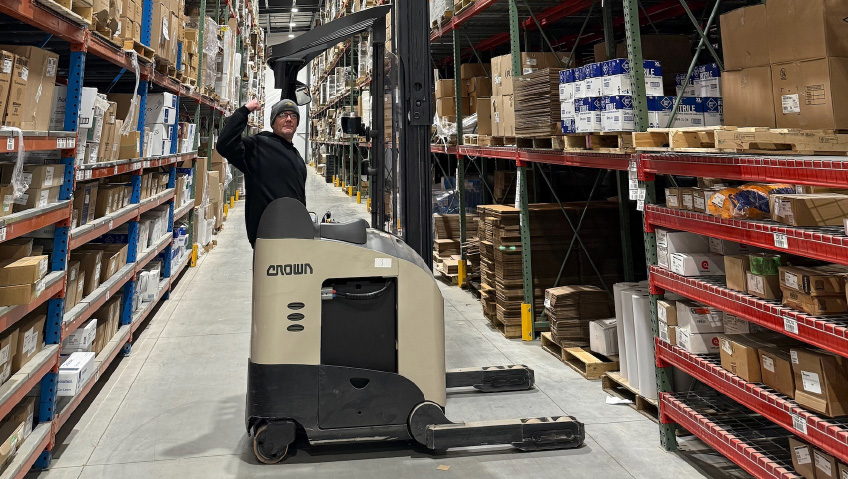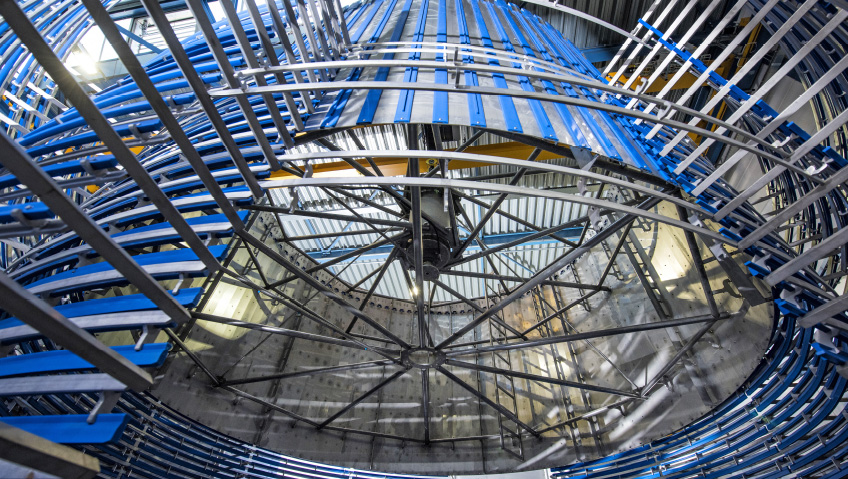Every little bit helps when it comes to reducing carbon footprints and minimizing environmental impacts, especially for companies like Inteplast Group, the largest manufacturer of integrated plastics in North America.
Inteplast Group produces a wide range of items such as plastic bags, stretch films, BOPP films, and PVC sheets. The company, celebrating its 30th anniversary this year, continues to balance its role as a leading manufacturer while maintaining high standards for innovation, safety, and commitment to sustainability, natural resource conservation, and materials management.
Established in Texas in 1991 with now more than 50 locations across North America, Inteplast Group fully appreciates the importance of practicing environmental responsibility in all aspects of plastic production, including continually evolving its pledge to enact efficient recycling and reusability of industrial materials along with its products.
“We are very concerned about the environment,” says General Manager Andy Chen. “It’s the same philosophy at every one of our plants.”
Unexpected truth
Plastic, Chen says, has always been perceived negatively when compared to paper – that it’s not environmentally friendly – when, if we take a closer look at the carbon footprint and processes for plastics and paper, we could learn a lot more about the pros and cons for each material.
“When you try to recycle paper, the recycling process for paper involves a greater carbon footprint than many people realize,” he says. “The chemicals used create a significant environmental impact. So in our company we try always to re-educate the customer or the industry. If you are using and producing plastics responsibly, it supports environmentally friendly initiatives. Recycle, reuse, reprocess – we spend a lot of time focusing on these areas – from product development to production.”
Inteplast’s commitment to protecting natural resources has been a key initiative since its inception in 1991. Part of this requires that the company educate its customers and communities-at-large about plastic recycling and the benefits of a circular economy. That mission, of course, extends to the creation of the company’s numerous products, including its newest, the remarkable IntePro® TITAN.
New innovations
IntePro® TITAN is a unique multilayer panel that’s not only lightweight, but extremely rigid and impact resistant. Made from 100 percent polypropylene, it’s easily constructed on traditional fluted plastic converting equipment, and can be die-cut, creased, sonic welded, and heat bonded for pallet sleeves, architectural panels, and plywood and pressed fiberboard replacement.
IntePro® TITAN is puncture and impact resistant, best in class for strength-to-weight ratio, sustainable, with a low-impact manufacturing process and is 100 percent recyclable at end-of-use cycle.
“This process is very popular in Europe where they’ve been using this product for more than 20 years, but for some reason it’s not popular in the United States,” says Chen. “It can be used 100 times, but we’re still helping people see the value in reusing material. We’re trying to change the concept. A lot of European companies are using the process already, and we’re trying to adopt the same process in the States,” he shares.
“It is stronger than the double or triple wall corrugated paper, with superior water and chemical resistance. It is also much lighter than plywood and wont shatter. It’s been proven in the material handling industry, and we should be able to prove it here.”
A more sustainable industry
Indeed, Inteplast Group plays a significant role in helping its distributors and end-consumers learn more about how plastics are manufactured responsibly as well as recycled for a more impactful contribution to a global economy, says Marketing Director Karen Dicang. And that’s done through education.
“The more that people understand plastics and their recyclability, the more the story will change,” she says. “That’s what we want to resonate with people. What we’re trying to get across, specifically, is that our product is 100 percent recyclable. It doesn’t need to go into a landfill.”
Are plastic companies as a whole ready to embrace sustainability? Chen thinks the financial aspects might be what’s holding them back, despite the positive future outcomes.
“This is a much better way to do things,” he says. “When you try to bring a financial standpoint to something, you need to invest; nothing is free. After you invest, you will see the result in a couple of years. This is the most challenging part. When you ask people who are only concerned about finances to invest in sustainable processes, some of them say, ‘This isn’t worth it. Why are you investing ten times more money than the budget?’ But here at Inteplast we want to show that when customers return and reuse materials, they will see results. It’s always a challenge to help people see the bigger picture.” As always, education is key when making any big changes that cost money.
Inteplast’s 4Rs program (Reduce, Reuse, Recycle, Repurpose) heightens customers’ awareness of their options for post-consumer resin use in their products, and as production capabilities expand, companies like Inteplast can continue to minimize their carbon footprint by embracing the mindset of lean manufacturing.
“This has always been more of a low-key objective for us, but we’re going to highlight it more in 2022,” says Dicang. This will include bolstering recyclability and putting programs together with customers that show the ways that Inteplast can help return their leftover plastic. “We actually will then use it internally in our recycling process and reuse it again.”
The recycle and reuse incentive helps Inteplast attract customers who understand the bottom line is cost.
“A lot of our customers in the United States have confided in us that it appears more cost- and time-effective to just discard their plastics into a dumpster. Finding the time to locate a recycler, get the containers to their facilities, and to actually sort substrates they are using, just isn’t part of a program they’ve committed to yet. That’s what a lot of customers have been telling me recently,” says Dicang.
“But there’s a financial benefit they can gain for that recycled plastic, and we’re willing to pay back our customers for it. It gives them a little more incentive when they hear that they can get paid for this,” she adds. “That’s something that we’ve been communicating now.”
Much of the initiative behind recycling product has arisen due to ongoing supply issues with polypropylene resin and plastics in general this year, says Dicang. Prices have skyrocketed, plus there’s a shortage of a number of types of plastics, which has hampered the output of many plastic companies.
“Our product is more of a commodity item. It’s not a long-term use product – it’s used maybe for three or four months and then discarded,” says Dicang. “So we’re telling customers, ‘we’ll buy it.’ We want them to use it, print on it, whatever they need to do, and then we’ll take it back. Then we’ll recycle and reuse it. Now is the perfect time to offer this program because of the situation with plastics in the market.”
The ability to recycle both post-consumer and post-industrial resin is another way Inteplast supports sustainability. Each of the company’s reclaim/reprocessing centers captures and recycles start-up film, edge trim, off-grade material, and other non-prime grade material, which immediately reintroduces recovered plastic – post-industrial resin – into the extrusion process.
This results in utilizing 100 percent of the materials. By doing so, Inteplast has reduced electricity demand by more than 670 million kW-hours, saved more than 90 million gallons of water, eliminated the need for 1.4 million barrels of oil, and kept 2.6 million cubic yards of waste out of landfills.
Making an impact
As for the company’s recycling programs, Inteplast’s Lolita manufacturing facility – which recycles plastic, metal, paper and pulp, and electronics, among other materials – has also made a positive environmental impact with nearly 22,000 trees saved and more than 8,900 barrels of oil not used. It has also eliminated the need for nine million gallons of water, saved 7,600,000 kW-hours of electricity not taken from the power grid, and kept 17,000 cubic yards of waste out of landfills.
“There are a lot of initiatives,” says Dicang. “We’re taking an active stance to reinforce environmentally sound practices. We make plastic and we also have programs in place that allow reusability within our facilities.”
Inteplast aims to continually develop its sustainability programs through recycle-and-reuse in the present and for the future. It helps that the company’s products are 100 percent recyclable (some plastics aren’t).
Part of what makes these programs successful is Inteplast’s consideration of its employees, who are “first priority,” says Chen. “We’re not concerned with numbers. Our concern is the employees – they’re always first, before profit and loss,” he says, referring to Inteplast’s adherence to safety requirements. “That’s how we do it, and employees stay longer and stick with the company because of it.”
Dicang adds that the commitment employees show is an organic part of Inteplast’s business, which includes longtime tenure.
“It speaks volumes for the number of people who have been with the company for more than 20 years already,” she says of the many employees who joined right out of high school or college and are still there.
“Speaking for myself, this was pretty much my first job out of college too, and you’ll hear those same stories with most employees you talk to. It also speaks volumes for how the company treats employees. They stay for a reason. The company is extremely committed and loyal to the employee and vice versa.”
It’s those professionals who will help Inteplast uphold its impressive dedication to sustainable practices going forward.
Looking ahead
Despite the challenges the pandemic has created with regard to labor and the supply chain over the past year and a half, Chen anticipates continued success in maintaining the company’s dedication to environmental issues, keeping the carbon footprint low, educating consumers and protecting natural resources.
Inteplast aims to continue minimizing its carbon footprint by educating staff and customers about why its products have sustainable value through reusability.
“We want to compete with our corrugated plastic,” says Chen. “How many corrugated plastic boxes do we use every day? How many and what kind? And how many go to the landfill? How many things are we using one time? If everyone can put the effort into using corrugated plastic boxes and reusing them, that would have a great impact on the environment.”






